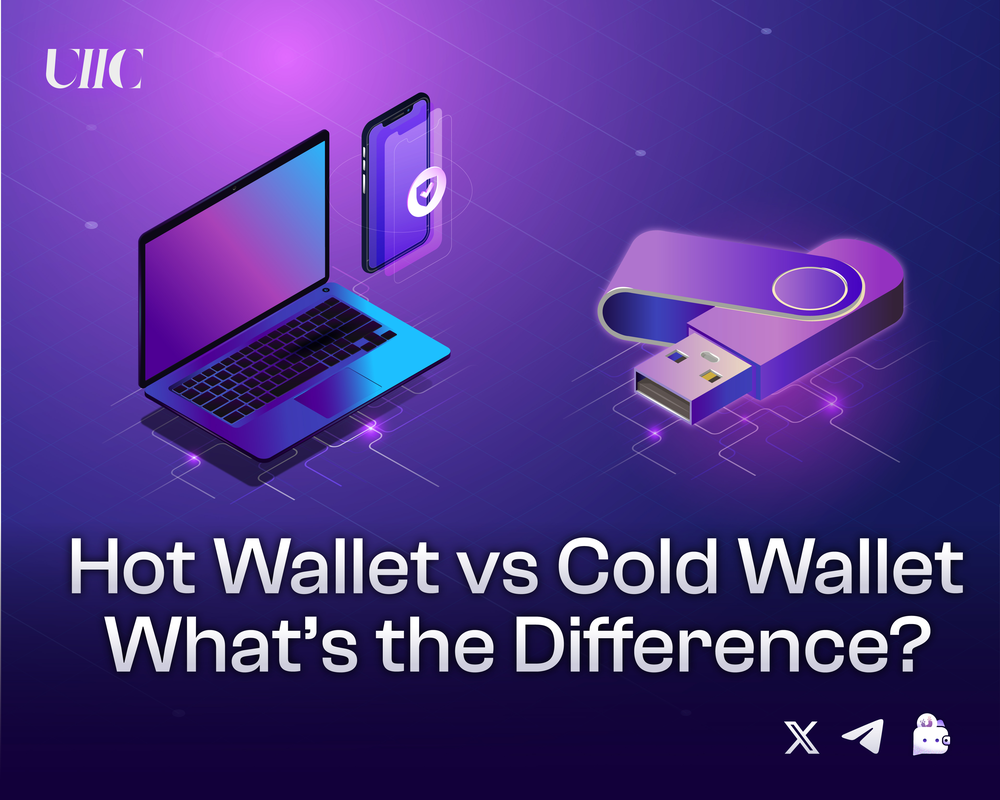# Hot Wallet vs Cold Wallet: A Comprehensive Guide
Cryptocurrency security is crucial. Two primary wallet types dominate the space: **Hot Wallets** and **Cold Wallets**. This guide explores their differences, pros & cons, and how platforms like **UIIC** enhance digital asset security.
---
## 🔥 Hot Wallets
### 📖 Definition & Functionality
Hot wallets are **internet-connected** wallets. They are convenient for **daily use**, **quick transactions**, and often integrated into exchanges or apps.
### ✅ Advantages
- **Ease of Access**: Instantly send, receive, and trade crypto.
- **User-Friendly**: Apps with intuitive interfaces for all experience levels.
### ⚠️ Risks
- **Security Vulnerabilities**: Always online = vulnerable to hacks, phishing, malware.
- **Device Dependence**: If your phone or computer is compromised, your funds are at risk.
---
## 🧊 Cold Wallets
### 📖 Definition & Functionality
Cold wallets are **offline storage methods** for cryptocurrency. They're ideal for **long-term holding** and protecting large amounts.
### 🔒 Types of Cold Wallets
- **Hardware Wallets** (e.g. Ledger, Trezor): Physical devices storing private keys securely.
- **Paper Wallets**: Printed keys stored physically.
- **Offline Software Wallets**: Installed on devices never connected to the internet.
### ✅ Advantages
- **High Security**: Immune to most cyber threats.
- **User Control**: You manage your own private keys.
- **Peace of Mind**: Perfect for long-term investors.
### 🧠 Best Practices
- **Create in Offline Environment**: Keep private key generation disconnected from the internet.
- **Secure Backups**: Write down and store your recovery phrase safely.
- **Transfer Carefully**: Use trusted devices and wallets when moving funds.
- **Physical Security**: Store devices or printed keys away from fire, theft, and damage.
- **Beware of Phishing**: Especially when using hot wallets to fund cold wallets.
---
## 🧠 UIIC's Role in Digital Asset Management
### 🚀 Web3 Innovation Leader
UIIC (United Incubator for Innovation and Capital) is reshaping how investors secure and manage their crypto assets.
### 🔐 UIIC Innovations
- **Advanced Security Protocols**: Regular audits + secure storage integrations.
- **User Empowerment**: Tutorials and resources to help users set up and manage cold wallets.
- **Full-Service Asset Management**: Tools for portfolio tracking, risk analysis, and investment planning.
---
## ✅ Conclusion
| Wallet Type | Ideal For | Pros | Cons |
|-------------|----------------------|------------------------------|-----------------------------|
| Hot Wallet | Daily Use & Trading | Fast, convenient | Less secure, online risks |
| Cold Wallet | Long-Term Holding | Highly secure, offline | Less convenient, physical risks |
Understanding both allows you to balance **accessibility and security**.
> 💡 Combine both: Keep small amounts in hot wallets, and store the bulk in cold wallets.
With platforms like **UIIC**, managing your crypto safely and smartly has never been easier.

Differences between Hot Wallet and Cold Wallet
Educational
Aug 20, 2024

Shape the Future
with UIIC
Join our community to shape a smarter,
decentralized digital world.

